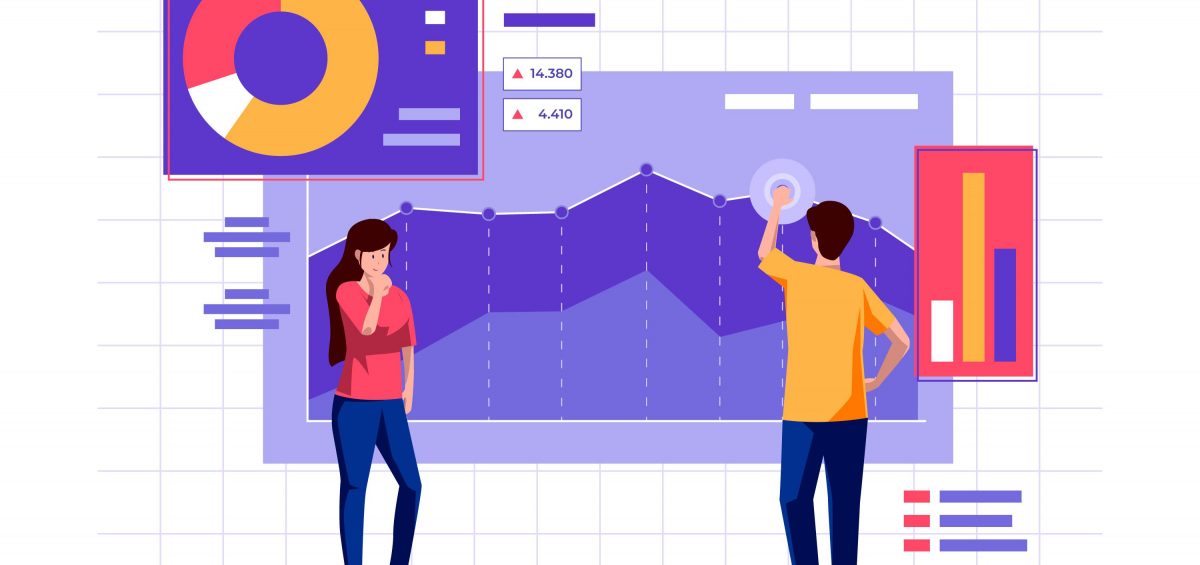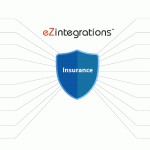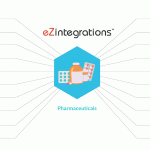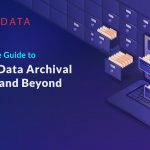Introduction:
In today’s data-driven world, effective data visualization has become a crucial tool for businesses to make informed decisions and gain a competitive edge. By transforming complex data into visual representations, businesses can communicate insights in a more compelling and understandable manner. This article aims to explore the key principles, tools, and best practices for mastering data visualization and harnessing its power to drive business impact.
I. Understanding Data Visualization
Data visualization is the graphical representation of data and information. It helps uncover patterns, relationships, and trends that may not be apparent in raw data alone. Data visualization provides a visual context to aid understanding, analysis, and decision-making. By presenting data visually, businesses can gain valuable insights and communicate complex information more effectively.
II. Key Principles of Effective Data Visualization
To create impactful visualizations, certain principles should be followed:
- Simplify complex data: Visualizations should simplify complex datasets into clear and concise visual representations to facilitate comprehension. For example, using charts or graphs to represent sales data over time can provide a clear picture of trends and patterns.
- Utilize appropriate chart types: Different data types require different chart types. Selecting the right chart type ensures that the data is represented accurately and meaningfully. For instance, a bar chart may be suitable for comparing sales performance across different regions, while a line chart may be more appropriate for showing trends over time.
- Designing for clarity and readability: Visualizations should be designed with clarity in mind, ensuring that the audience can easily interpret and understand the information. This includes choosing appropriate fonts, font sizes, and layouts that enhance readability.
- Incorporating meaningful colors, labels, and annotations: Colors, labels, and annotations should be used purposefully to highlight important information and guide the audience’s attention. For instance, using contrasting colors to differentiate categories or adding labels and annotations to clarify specific data points.
- Emphasizing storytelling through data visualization: Data visualizations should tell a compelling story, guiding the audience through a narrative that highlights key insights and drives action. This can be achieved by structuring the visualization in a logical flow and incorporating contextual information.
III. Selecting the Right Data Visualization Tools
There are various data visualization tools available in the market, each with its own features and functionalities. When selecting a tool for your business, consider factors such as ease of use, scalability, integration capabilities, and the specific visualization requirements of your data. Popular tools include Tableau, Power BI, QlikView, Google Data Studio, Bizintel360, and eZintegrations. For example, Bizintel360 offers advanced data visualization capabilities with interactive dashboards and customizable charts, while eZintegrations provides seamless integration of data from various sources for comprehensive visualizations. Try now for FREE
IV. Designing Engaging and Impactful Data Visualizations
To create engaging and impactful visualizations, follow these steps:
- Define the purpose and objective: Clearly articulate the purpose of the visualization and what insights you want to convey to your audience. For example, if the objective is to showcase product performance, the visualization should focus on metrics such as sales, revenue, and customer satisfaction.
- Choose the right data: Select the most relevant and meaningful data that aligns with your visualization’s objective. This may involve cleaning and transforming the data to ensure accuracy and consistency.
- Select appropriate visual elements and chart types: Match the data attributes with suitable visual elements and chart types that effectively represent the data. For instance, a pie chart may be used to show the distribution of market share among different competitors.
- Incorporate effective titles, labels, and legends: Clearly label the visual elements and provide meaningful titles and legends for easy understanding. This helps the audience quickly grasp the key takeaways from the visualization.
- Enhance visual appeal with color and style: Use colors strategically to enhance visual appeal and convey additional meaning. For example, using a red color for negative trends and a green color for positive trends. Consider the overall style and aesthetics of the visualization to create a visually appealing and cohesive design.
- Ensure responsive and interactive visualizations: Make sure your visualizations are responsive and interactive, allowing users to explore and interact with the data for deeper insights. This can be achieved by adding interactive filters, tooltips, and drill-down options.
V. Communicating Insights through Data Visualizations
To effectively communicate insights through data visualizations:
- Identify the target audience and their needs: Understand who will be consuming the visualizations and tailor the presentation to their specific needs and knowledge level. For example, executives may require high-level summaries, while analysts may need access to detailed data.
- Craft a clear and concise narrative: Develop a story around the data that guides the audience through the insights in a logical and coherent manner. This can be done by structuring the visualization in a way that presents the information in a meaningful sequence.
- Use annotations and callouts: Highlight important points, trends, or outliers using annotations and callouts to draw attention to key insights. For instance, adding annotations to data points that deviate significantly from the average.
- Incorporate context and comparisons: Provide context to the data by incorporating benchmarks, historical data, or industry standards. Use comparisons to highlight variations and trends. For example, comparing current sales figures with the previous year’s performance or industry averages.
- Present actionable insights and recommendations: Go beyond presenting data and provide actionable insights and recommendations based on the visualizations to drive business impact. This can involve suggesting specific strategies or actions based on the identified patterns or trends.
VI. Best Practices for Data Visualization in Business
To make the most of data visualization, follow these best practices:
- Ensure data accuracy and integrity: Validate and verify data to ensure accuracy and reliability in your visualizations. Regularly check for data inconsistencies or errors that may affect the integrity of the visualizations.
- Regularly update and refresh visualizations: Keep your visualizations up to date with the latest data to maintain their relevance and usefulness. Set up automated processes or workflows to ensure timely updates.
- Conduct user testing and feedback iterations: Gather feedback from users and incorporate improvements to enhance the usability and effectiveness of your visualizations. User testing can help identify any usability issues or areas for improvement.
- Promote collaboration and sharing of visualizations: Encourage collaboration among teams by sharing visualizations and insights across the organization, fostering data-driven decision-making. This can be done through collaborative platforms or tools that facilitate sharing and collaboration.
- Stay updated with emerging trends and techniques: Stay informed about new tools, techniques, and trends in data visualization to continuously improve your skills and stay ahead in the field. Attend industry conferences, participate in webinars, and engage with the data visualization community to stay updated.
VII. Case Studies: Real-world Examples of Effective Data Visualizations
To illustrate the power of data visualization in driving business impact, showcase real-world examples where effective visualizations have made a significant difference. For instance, a case study on how a retail company used visualizations to identify sales trends and optimize inventory management, resulting in increased profitability. Another example could be how a healthcare organization used data visualizations to monitor patient outcomes and identify areas for improvement in their healthcare services.
VIII. Overcoming Challenges in Data Visualization
Acknowledge and address challenges that businesses may encounter in data visualization, such as dealing with large and complex datasets, addressing data privacy and security concerns, handling subjective interpretations and biases, and mitigating information overload and visual clutter. Provide strategies and tips to overcome these challenges effectively. For example, using data aggregation techniques to simplify complex datasets or implementing data anonymization protocols to ensure data privacy.
IX. Conclusion
Summarize the importance of data visualization in business and how it can drive impactful decision-making. Emphasize the key takeaways from the article, encouraging readers to embrace data visualization as a strategic tool for communication and business success. Highlight the significance of leveraging tools like Bizintel360 and eZintegrations to enhance data visualization capabilities and achieve better business outcomes.
By mastering data visualization techniques and following best practices, businesses can effectively communicate insights, drive informed decision-making, and achieve tangible business impact. With the increasing availability of data and the growing need for data-driven decision-making, data visualization skills have become essential for professionals across various industries.






